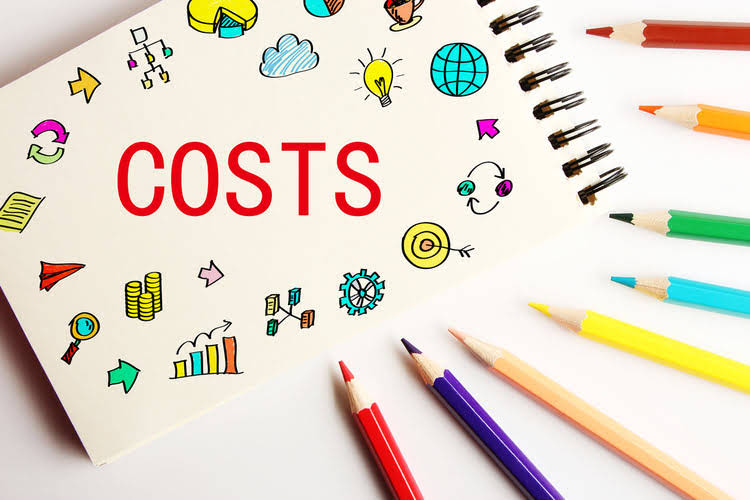Nonetheless, the focus is only on mileage tracking and only USD support is available. Expensify is likely one of the business expense-tracking apps on our listing that ups the ante. You get unlimited receipt-tracking and expense management with the free plan. Nevertheless, it’s very pricey, if you are not utilizing the Expensify card and there are solely 25 scans/month obtainable with the free plan. So that’s all you want to look for in a business expense administration answer. Nonetheless, nonetheless finding the best-fit answer for your corporation could be overwhelming.
We particularly chose this one because of the unified journey and expense administration integration. Plus, with Navan, you get real-time and detailed monetary oversight and operational management. Furthermore, the user-friendly interface and integration capabilities are like the cherry on the cake. Though monitoring bills is mostly useful to see where your money is going, it’s essential in terms of enterprise and tax write-offs. Whether Or Not you’re a small business owner or a self-employed freelancer, monitoring app that tracks business expenses business expenses lets you stay tax-compliant, track spending, and maximize your tax deductions.
Desktrack Options
BILL Spend & Expense, formerly generally recognized as Divvy, is a singular entry among business expense monitoring apps because it combines a no-fee company card with powerful, free expense administration software program. It Is built on a proactive spending model, permitting businesses to set and enforce budgets in real-time. This approach prevents out-of-policy spending before it happens, rather than simply tracking it afterward.
This follow is essential for companies of all sizes to take care of monetary readability, ensure compliance, and make informed decisions. Corporate playing cards minimize the hassle of conventional reimbursements, which regularly waste time for workers and finance teams alike. By permitting workers to pay directly with a company-issued card as an alternative of dipping into their very own pockets, there’s no must file prolonged expense reports or await payback. Correct expense tracking gives you a clear picture of how cash is being used. With this data, you presumably can build budgets that replicate real enterprise wants instead of guesswork. It additionally helps compare precise spending with planned goals, modify priorities on the go, and direct funds toward areas that deliver the most worth.
- SAP Concur is a flexible expense administration platform that provides tailor-made options based on enterprise needs.
- By doing so, you’ll be higher equipped to manage expenses effectively and make informed financial choices in your group.
- Attach receipts from mobile, the cloud, or pre-uploaded documents and validate the expense claims.
Start by clearly defining your expense insurance policies within the software, then conduct a small pilot program with a few staff members to work out any issues. Proper coaching is important to make sure everybody understands tips on how to capture receipts, categorize bills correctly, and submit reviews on time. Positive, you might be able to get away with handbook expense tracking, particularly as a small business owner or startup. But as you develop, using the most effective expense administration software to trace spending routinely will make your life a complete lot easier. Expensify provides receipt scanning, mileage monitoring, approval workflows, and enterprise cards. With many options and integrations, Expensify is great for these looking for extra advanced business and expense administration.
It unlocks features like custom wallets, limitless accounts, and the ability to export your data. Two features that we notably loved are computerized expense categorization and receipt scanning. With its multi-level approval workflow function, the app ensures that they do the heavy lifting of your finances whereas your team stays happy and also you stay targeted on what issues. Issue in aspects like cost-effectiveness, user-friendliness, and scalability when making your choice https://www.online-accounting.net/.
With numerous options available, choosing the proper expense tracker app could be overwhelming. Corporations with many virtual expenses will love the virtual bank card feature because it means they don’t have to problem bodily cards to each employee. Small businesses or freelancers who want powerful expense-tracking options for free.
Stories And Analytics
The evolution of business expense monitoring has resulted in more environment friendly, correct, and insightful monetary administration. Efficient expense tracking is a cornerstone of business success, no matter your company’s size or trade. Bear In Mind, though, that Expensify may be the best enterprise expense tracker app for some businesses—but not necessarily all businesses. Many accounting software solutions (QuickBooks included) have built-in expense tracking options that scale up as your corporation grows. FreshBooks’s accounting software program consists of built-in expense monitoring, so that you don’t have to put cash into two apps to manage your business’s prices. As An Alternative, FreshBooks syncs together with your bank account and bank cards, mechanically importing and categorizing bills, plus generating reports that help you make sense of your profit and loss.
Expensify: Monitor Business Expenses & Handle Receipts
With the proper instruments, you can simplify tracking, enforce policies, streamline reimbursements, and gain real-time insights into your company’s spending. Among the numerous choices available, Expense Tracker 365 stands out as essentially the most dependable and efficient resolution. Choose a devoted enterprise bank card to deal with company-related purchases. This keeps personal and business expenses apart, which simplifies bookkeeping and improves accuracy. Many providers, corresponding to Brex, provide cards with greater credit score limits, tailored rewards, and no private legal responsibility requirements making them a wise option for growing businesses. Keeping private and business funds aside not solely simplifies bookkeeping but in addition strengthens your company’s financial credibility.
For some companies, it might make sense to choose an all-in-one answer that features expense tracking as a half of an accounting software bundle. As a enterprise expense tracker, FreshBooks lets you connect your bank card and bank accounts so all expenses are updated mechanically. You can also addContent paper receipts by way of the app or e mail digital receipts to have them scanned and processed mechanically. There are 14 default expense categories and greater than 40 expense subcategories however, if that’s not enough, you can create your personal as nicely. With all the expense information Zoho collects, it can create greater than 25 reviews primarily based in your spending, travel, credit cards and more to assist you stay up to date with all expenses. You can reap the benefits of all of this at no cost if you don’t mind having a 5 GB restrict on receipt storage, 20 receipt auto scans per month and three customers.











